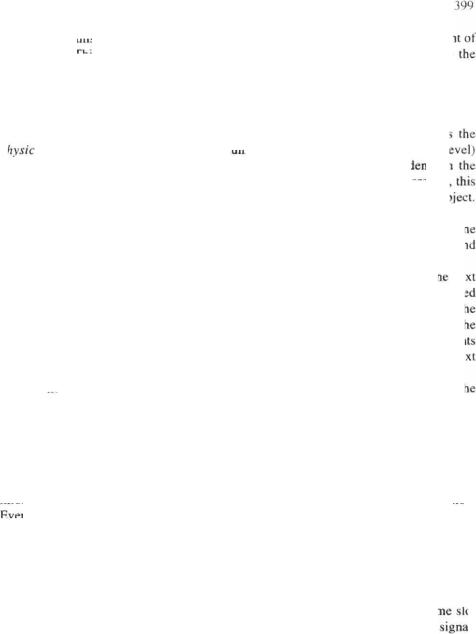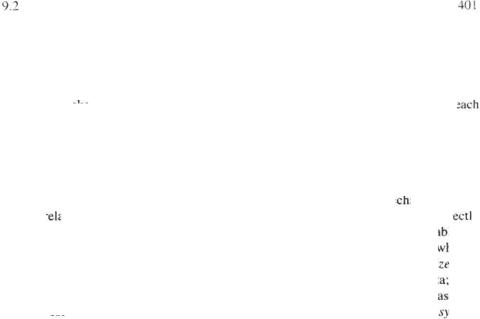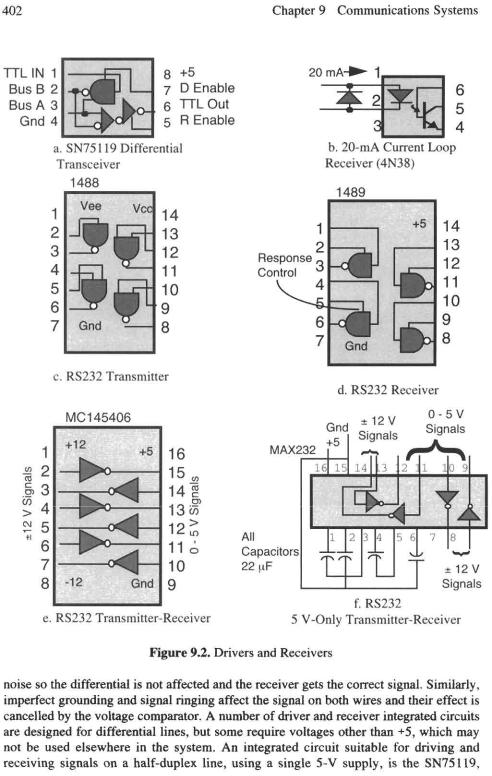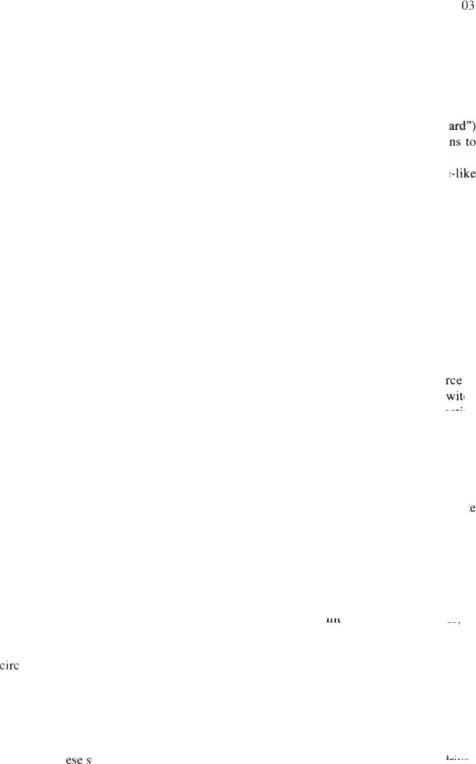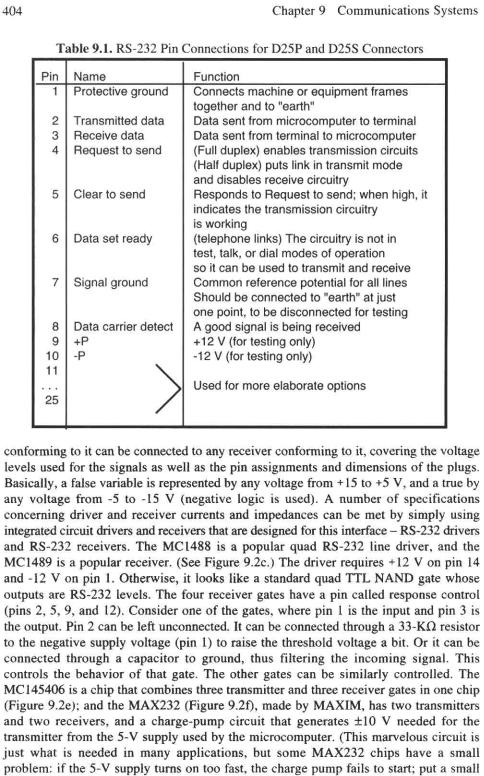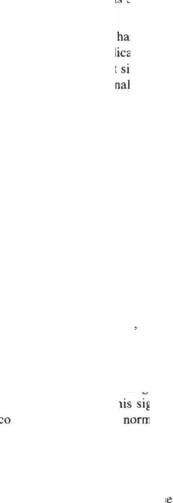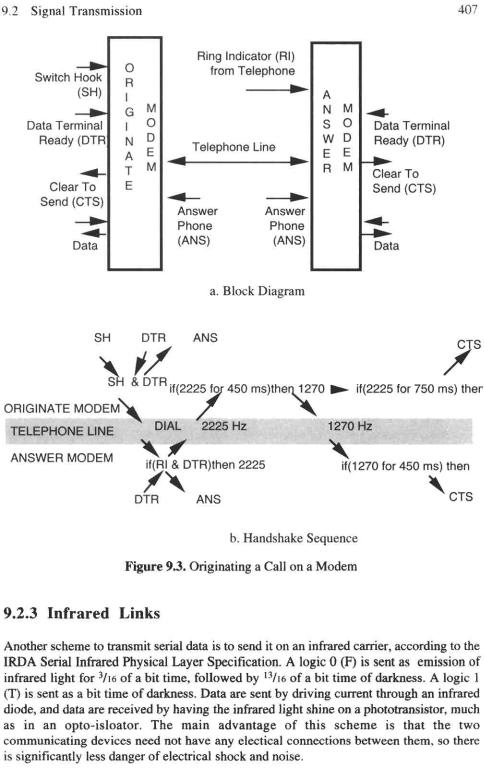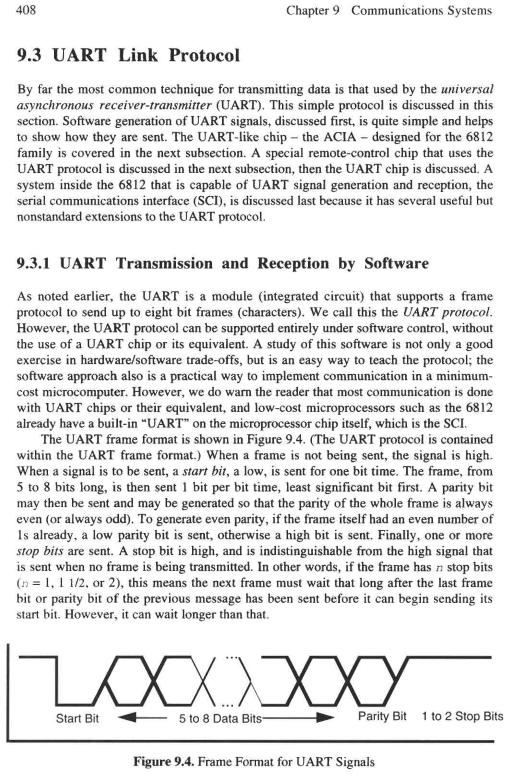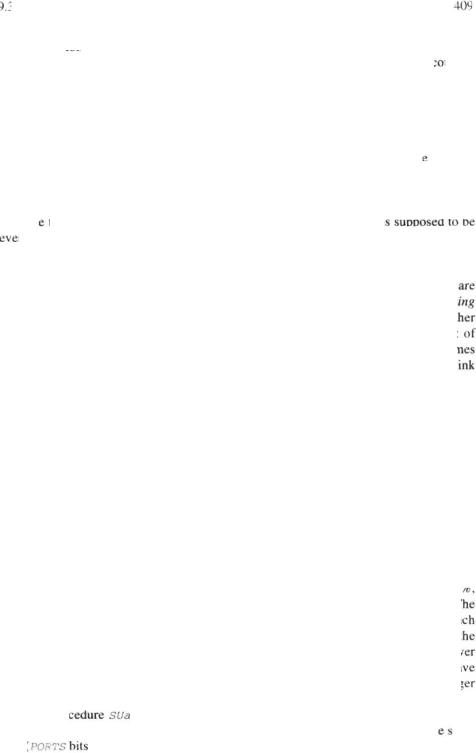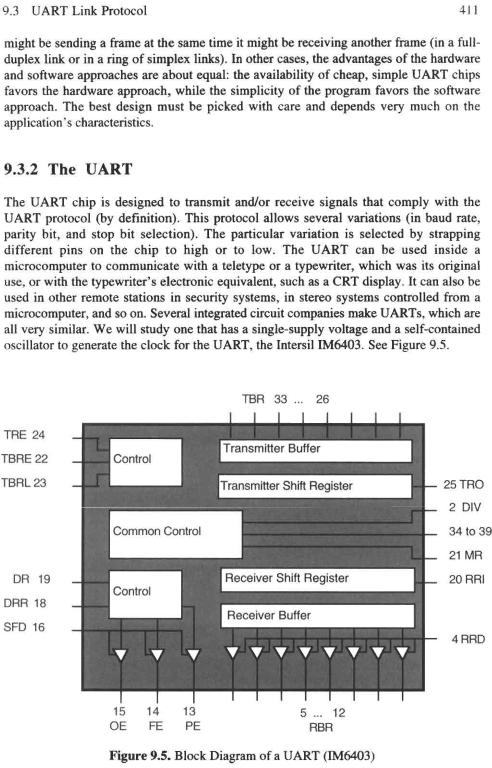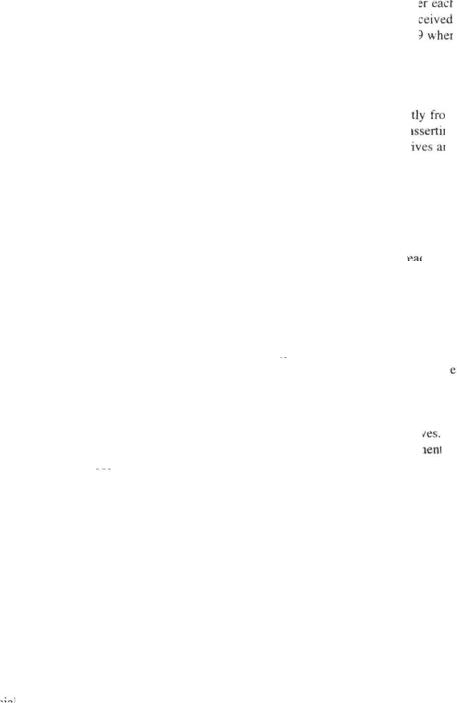
- •Contents
- •Preface
- •List of Figures
- •List of Tables
- •Acknowledgments
- •1.1.2 The Instruction
- •1 Problems
- •2 Programming Microcomputers
- •3 Bus Hardware and Signals
- •3.3 Conclusions
- •3 Problems
- •5 Interrupts and Alternatives
- •5.4.1 Direct Memory Access
- •7.1.3 Other Transducers
- •7.2 Basic Analog Processing Components
- •7.2.1 Transistors and Silicon Controlled Rectifiers
- •8 Counters and Timers
- •9. Communications Systems
- •9.3.3 The ACIA
- •9.4.4 The Small Computer System Interface (SCSI)
- •9.5 Conclusions
- •10.1.2 A 6812 SPI Display

9
Communications Systems
The microcomputer has many uses in communications systems, and a communications ystem is often a significant part of a microcomputer. This chapter examines techniques or digital communications of computer data.
Attention is focused on a microcomputer's communications subsystem - the part hat interfaces slower I/O devices like typewriters and printers to the microcomputer. This is often a universal asynchronous receiver-transmitter (UART). Because of their opularity in this application, UARTs have been used for a variety of communications unctions, including remote-control and multiple-computer intercommunications. However, their use is limited to communicating short (1-byte) messages at slow rates less than 1000 bytes per second). The synchronous data link control (SDLC) is suitable or sending longer messages (about 1000 bytes) at faster rates (about 1,000,000 bits per econd), such as for sending data between computers or between computers and fast I/O evices. The IEEE-488 bus, for microcomputer control of instruments like digital oltmeters and frequency generators, and the SCSI bus, for communication to and from ntelligent peripherals, send a byte at a time rather than a bit at a time.
The overall principles of communications systems, including the ideas of levels and rotocols, are introduced in the first section. The signal transmission medium is iscussed next, covering some typical problems and techniques communications ngineers encountered in moving data. The UART and related devices that use the same ommunications mechanisms are fundamental to I/O interface design. So, we spend quite bit of time on these devices, imparting basic information about their hardware and oftware. They will probably find use in most of your designs for communicating with eletypes or teletype-like terminals, keyboards, and CRTs, as well as for simple remote ontrol. Finally, we look at the more complex communications interfaces used between arge mainframe computers to control test and measurement equipment in the laboratory nd to connect intelligent I/O.
Communications terminology is rather involved, with roots in the (comparatively ncient) telephone industry and in the computer industry, and some terms stemming niquely from digital communications. Communications design is almost a completely ifferent discipline from microcomputer design. Moreover, one kind of system, such as ne using UARTs, uses quite different terminology than that used to describe another, imilar system, such as one using SDLC links. While it is important to be able to talk
397

